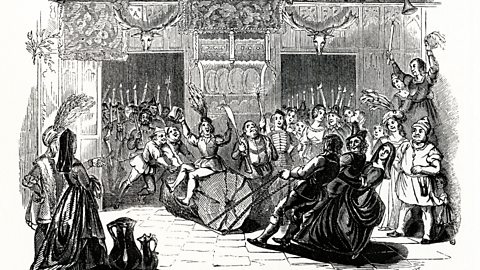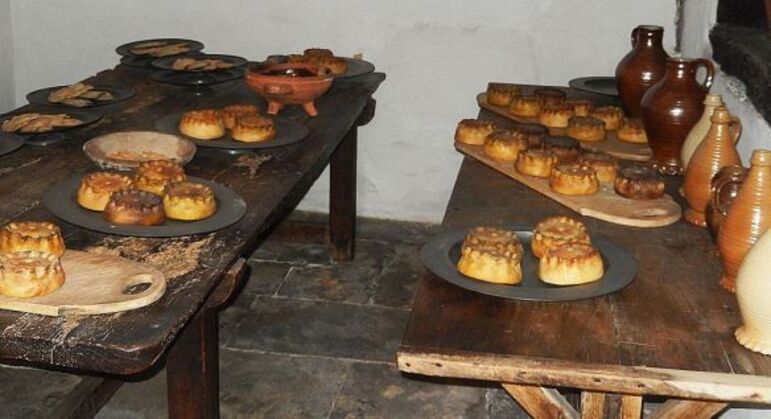By Isabella @TheWandCarver
Instagram: @thewandcarver
Ah, the dark half of the year is slowly ending and what better way to celebrate than Yule? Yes, we still have some dark weeks ahead but only about half what we began with on Samhain… now if we watch carefully, we shall notice that the days get ever so slightly longer each week once we peak on the 21st of December, the first day of Yule [Auld English, ġēol] and the day of Winter Solstice, our longest night of the year.
What would our ancestors have been doing this night? That entirely depends on which ancestors. Our most recent ones [the last 500 years’ worth] would likely be ignoring Yule mostly [whilst not bearing in mind most of their Christmas ‘traditions’ were born from Pagan Yule] instead speaking of Christmas food, going to church, planning festivities to welcome again the birth of the Christ child. Yule is very much a celebration of birth as well – the rebirth of light and sunshine. Jesus is often called “the Light and the Way” by Christians. These two concepts go hand in hand this time of year yet separately.
But what would our ancestors be doing this night 500+ years ago? In England and surrounding countries, many families, Christian or Pagan, would be dragging in a great Yule log to burn in their largest fireplace – Christians were very much a part of this holdover tradition from their Pagan pasts.
There may have been weddings planned at this time. Another long-held but eventually dissolved practise was that of handfasting by the Catholic church. Along with the formal Christian wedding ceremony there was also a handfasting, from the Old Norse handfesta meaning “to strike a bargain by joining hands” between the wedded couple. This presumably was dissolved after all the Saxon-Dane conflict was eventually resolved in England.
Much decoration was done in homes all over the British Isles and Germany [and likely everywhere]. We can thank the Germanic people, the Saxons, for introducing us to the joys of decorating and feasting during Yule. Long before the Danes decided to embark upon our shores, the Saxons came and apart from some fighting now and then, they taught us so much regarding this lovely Sabbat. This is not to mean we did not already have traditions, but we did learn more. I mean, nobody knew Yule like the Saxons! When they fully embraced Christianity, they fully embraced Christmas like no other, as well. We would likely have never had Christmas trees had it not been for the Germanic people.
Twelve days of….
This is where all the fun happened No matter if you lived in 500 AD or 1500 AD, or even later, the 12 days of Yule or Christmas were the best! Some early Pagan countries only celebrated Yule for three days or “until the ale ran out” according to the Norse text, Heimskringla. Still, a good time was had by all, unless, of course, you were one of those being sacrificed. A lot of that went on in Pagan culture, however, the eating, drinking, and making merry went on with the living. Luckily, more animals were sacrificed than people and the slaughtered animals fed the community; of course, plates full were left for the gods as well.
No work was allowed during the 12 days of Yule or Christmas. In the run up to the Yule celebrations, now beginning on roughly the 21st of December and the Christmas celebrations on the 25th, the men and women of a village worked tirelessly to prepare. Women made candles, took inventory of how much grain they could use from their stores for pastries, loaves of bread and pies. They made extra ale and often the menfolk were made use of decorating the homes. Especially when the huge double ring bedecked with ribbons, holly, ivy, and mistletoe needed to be hung from the centre of the ceiling in the main room. Baking and preparing food began well ahead to ensure everything was ready. And, of course, the men of each household, brought much joy to their families by dragging home the huge Yule log for the fire which was to hopefully last 12 nights. These activities were generally the same for both Pagan and Christians alike. The biggest difference being that the Pagans got a four day head start and their Twelfth Night ended on around the 31st of December or 1 January. I should say nearly every year as the calendars were not always in congruence with each other in olden days. The Christian Twelfth Night is always on 6th January.
How will you spend your 12 days?
Are you the one who is lucky enough to live where you can drag a huge Yule log home to burn for twelve nights? Or perhaps you enjoy baking bread and brewing ale…I hope that everyone will be able to spend their Yule or Christmas in a traditional way as much as possible. Mostly, I hope you can spend it with family – safely. Almost everywhere has spent at least one Yule or Christmas in lockdown. But that was before vaccines. Now that we have them, although not perfect, I hope you will join me in getting yours soon.
My daughters and I wish you the blessing of light and a very happy Yule. To our Christian friends, we wish you a very Happy Christmas. To all, we wish a gloriously Happy New Year and to Scotland, Happy Hogmanay 2022! And, as always, warmest blessings to all whom this way wander x
See you next year!



